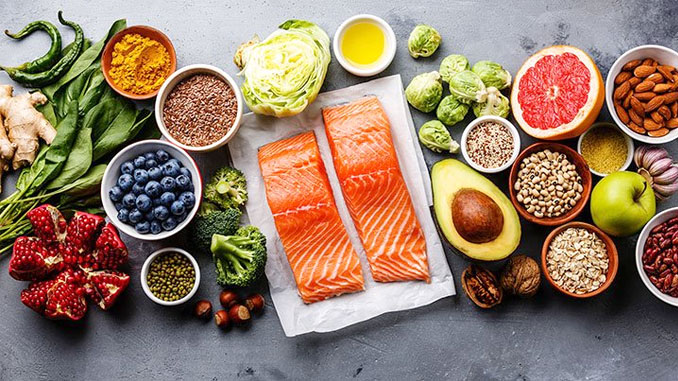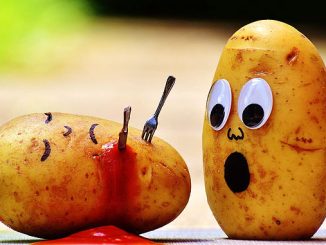
In 1993, the Harvard Medical School released the results of research that studied the diets of those countries bordering on the Mediterranean. Their findings suggested that fat and carbohydrates were NOT the main culprit in obesity and heart disease, but rather that the RIGHT fats and carbohydrates should be the base for a healthy diet.
The study pointed to low rates of obesity, diabetes and heart disease throughout the region as proof of their contention.
Exactly what is the Mediterranean diet and can it help you lose weight? There actually is no ‘Mediterranean’ diet – it’s a compilation of the way that people in the countries surrounding the Mediterranean Sea eat. Despite the differences in actual specifics, all of those studied based their diets on the same proportions of food groups and calories, and all included olive oil as their main source of fat.
In fact, their diets contained far more than the recommendations made by the USDA – 40% rather than the 30% recommended for most healthy Americans. Still, the evidence was irrefutable. Therefore, it must have been the KIND of carbohydrates and fats that make the difference.
The Mediterranean diet consists of the following guidelines:
60% Of Total Carbohydrates From Grains, Fruits And Vegetables
Those include whole rice, fresh vegetables and fruits, whole grain breads and cereals, polenta, pasta (made with whole grain, not refined white flour)

Sparing Use of Red Meat, Fish And Poultry
The typical adult Mediterranean consumes about 15 ounces of red meat and poultry per week. Another 5-15 ounces of fish per week account for the bulk of their meat protein intake. Compare that to the typical American diet which might include a 1 pound steak for dinner one night, a 1/2 pound chicken breast the next, and on and on.
Olive Oil
Olive oil is not a miracle oil. It is, however, mono-unsaturated – a good fat. Mono-unsaturated fats help lower cholesterol rather than raising it, and are healthy ways to add fats to your diet (and yes, even though we think of fat as a dirty word, your body does need some, or it can’t use many of the vitamins you feed it!)
The other important component of the Mediterranean lifestyle was activity. The typical Mediterranean day includes walking rather than driving, physical activity in the fields or the home and recreation. Physical activity is vital in helping the body to lose weight, and to maintain your new weight once you reach it.
The secret to losing weight with the Mediterranean diet is to base your meals on healthy carbohydrates – leafy green vegetables, brightly colored vegetables, whole grains and meals. Use meat sparingly – no more than 3-6 ounces per day. Derive dietary fat from vegetable sources – or from fish oil.
Exercise regularly to rev up your metabolism. The Mediterranean diet isn’t a weight loss regimen. It’s a new way of eating that will help you reach your goal weight and stay there when you get there.
What is the Green Tea Diet Plan?
Eating and dieting these days do not usually involve your favorite beverages like green tea and coffee. But this is not always necessarily the case. With some bit of planning and a lot of discipline, your diet plan and weight regime can include your morning cups of coffee or green tea.
South Beach Diet Plan
An idea formulated by Dr. Agatston, the South Beach Diet plan is not low-carb, nor low-fat. According to its originator, the South Beach Diet plan “teaches you to rely on the right carbs and the right fats.”
This diet plan is comprised of three phases – Banishing your Cravings, Reintroducing Carbs, and A Diet for Life. Using artificial sweetener and low-fat milk in your coffee or green tea during all three phases is one way to go on losing weight without having to give up your brewed cup. Going decaf with your coffee might also be a good idea since the objective of this diet is maintaining even insulin levels. If you’re a green tea drinker, then there is less worries for you. Green tea contains only very few amounts of caffeine.

The Zone Diet Plan
The Zone Diet plan was developed by Barry Sears, a former biotechnology researcher at the Massachusetts Institute of Technology. This diet plan is based on the maintenance and consistency of insulin levels. Because this diet plan also concerns itself with insulin control, the issues that arise are handled similarly as that with the South Beach Diet plan. Taking decaffeinated coffee and green tea is all right as long as these beverages don’t spike up your insulin. The eating program of the Zone Diet plan requires you to use artificial sweetener and low-fat milk in your coffee or green tea.
Blood Type Diet Plan
The Blood Type Diet plan is a weight loss regimen where the foods you eat are based on your blood type. The eating program of the Blood Type Diet plan is more restricted compared to the South Beach Diet plan, the Zone Diet plan, and the Atkins Diet plan. For instance, for people with blood types A and AB, coffee is highly advised. But for those with blood types O, adding coffee to the Blood Type Diet plan should be avoided. Green teas on the other hand are acceptable for any blood types. However, adding natural sweeteners like sugar, honey, stevia, or maple syrup in green tea should be avoided in this diet plan.
Sugar Busters Diet Plan
The name of the diet plan says it all. Subscribers to this diet plan are highly cautioned against sugars. Coffee and green teas are perfectly fine but only use artificial sweeteners.
Atkins Diet Plan
Another low-carb diet plan variety, the Atkins Diet plan works best with caffeine-free coffee and green tea. For best results, artificial sweeteners in your green tea and coffee are advised to keep your carbs down.
Paleolithic Diet Plan
Also called the Stone Age Diet plan, this diet plan is based on the consumption of simple, unprocessed foods that our Neanderthal ancestors would have eaten. This diet plan is perfect for green tea drinkers. Green tea is simple and 100% natural steamed dried leaves from the Camellia sinensis plant. If you’re a coffee drinker, you might be in for a tougher choice since you might have to give up coffee all together with this diet plan. Sugars in green teas are still a big no-no, especially the refined kind.
As you can see, there are plenty of options available to help you with your diet plan, and enjoying the benefits of green tea is a great place to start.
What Is The Atkins Diet?
The Atkins weight loss diet is based on one simple principle: Your body burns both carbohydrates and fat for calories. If you reduce the amounts of carbohydrates available, it will burn more fat and you will lose weight.
According to Atkins, calories are unimportant. The key to losing weight is to restrict the carbohydrates that you eat and force the body to turn to its stored fat as an energy source. As proof of this, proponents of the Atkins Diet point to the following facts derived from research:
- When the body doesn’t have enough carbohydrate, it will use ketenes derived from fat as energy.
- You can eat more food and lose more weight on a low carbohydrate diet than you can on a low fat diet.
- You crave less food when you eat fewer carbohydrates.
- By eating fewer carbohydrates, people tend to eat fewer calories without counting them.
- The greater the difference between fat and carbohydrate, the greater the weight loss.
In short, if you restrict your intake of carbohydrates, you will most likely also restrict your intake of calories. By lowering your carbohydrate intake, you will encourage your body to turn to fat for energy.
The Atkins diet has provoked storms of controversy since it was first published. The recommendation to eat a high-protein, low-carbohydrate flew in the face of all the dietary recommendations by established medical institutions. The diet was denounced as unsafe, particularly if used as a life-long weight maintenance plan.
Over the past five to ten years, there have been numerous studies that come down on both sides of the equation, and Atkins last version of the diet included the admission that calories do matter, and the advice to ‘eat only enough to satisfy hunger’.
A typical menu for a meal on the Atkins Diet might include:
- Portobello and Ricotta Crostini
- Chicken Milanese over Spring Salad
- Lemon Vinaigrette dressing
- Warm Lentils and Celery
- Raspberry Cheesecake in a Cup
The eating plan recommended by the Atkins diet contains very low portions of carbohydrates, deriving the majority of carbohydrates from vegetables high in fiber and low in carbs, and unrestricted portions of proteins, including high fat proteins like beef, pork and cheese.
Follow up research on people who have used the Atkins Diet to lose weight show a fast initial weight loss that eventually levels off. The Atkins Diet has four phases to account for it:
- The Induction Phase, which restricts carbohydrates severely.
- The OWL (Ongoing Weight Loss) Phase, in which you add in limited carbs and tailor the eating plan to your tastes
- Pre-maintenance, with ten pounds or less to the target goal, deliberately slows weight loss to begin adjusting the body to after-weight-loss diet.
- Lifetime Maintenance, a long-term eating plan that emphasizes low carbohydrates and healthy, long-term eating
Who should use the Atkins Diet?
While the Atkins Diet seems on the surface to be directly counter to what is recommended by most medical institutions, many of the principles are actually the same. Unless you are under the care of a physician for a chronic medical condition like diabetes, high blood pressure or coronary problems, you can use the Atkins Diet.
Do pay attention to the portions recommended in the menus and plans despite the reassurances that you can ‘eat all you want and still lose weight.’




